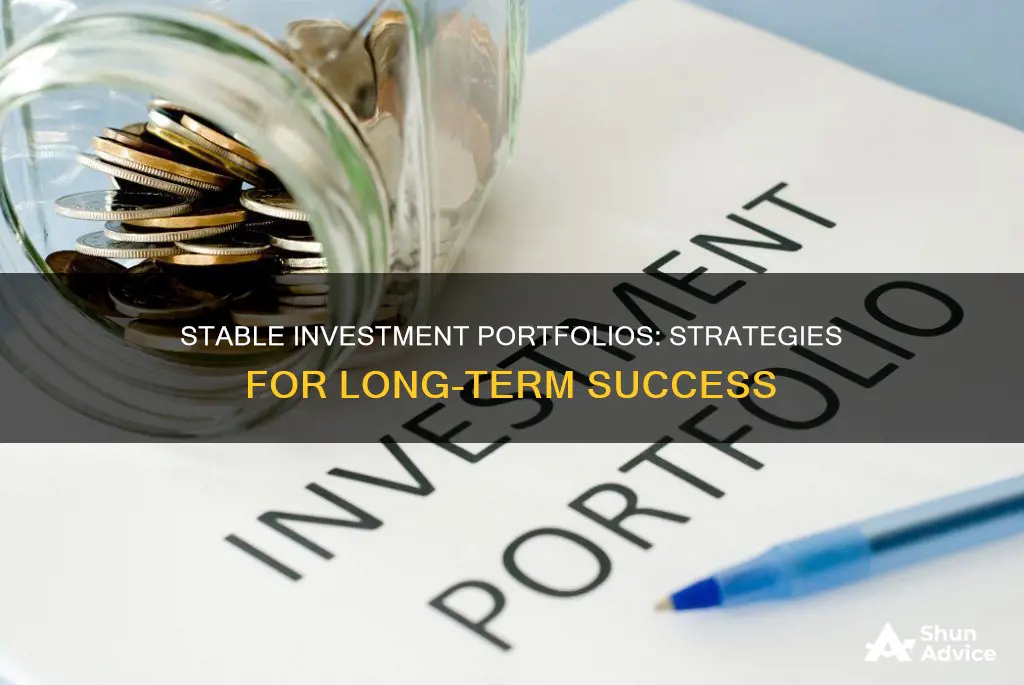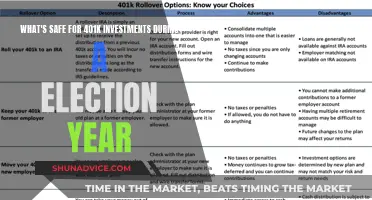
When it comes to investing, there is no one-size-fits-all approach and the level of risk an investor is comfortable with plays a crucial role in determining the composition of their portfolio. While some investors may be comfortable with taking on more risk in pursuit of higher returns, others may prioritise stability and capital preservation.
For those seeking a more stable investment strategy, here are some options to consider:
- U.S. Treasury Securities: These include Treasury bills, notes, and bonds, which are considered among the safest investments globally, backed by the full faith and credit of the U.S. government. They offer varying maturities and are easily tradable due to their high liquidity.
- Certificates of Deposit (CDs): CDs are offered by banks and are FDIC-insured, making them a safe investment choice. However, early withdrawal typically incurs a penalty, and their returns may not always keep up with inflation.
- Money Market Mutual Funds: These funds offer high liquidity and low costs by investing in short-term, high-credit-quality debt securities. While they provide lower returns compared to other mutual funds, they are considered a safe option for short-term cash management.
- High-Yield Savings Accounts: These accounts offer a modest return with high liquidity and are FDIC-insured, making them a safe choice for parking emergency funds or money for near-term purchases.
- Dividend-Paying Stocks: While stocks are generally riskier, dividend-paying stocks are considered safer than high-growth stocks as they provide regular income and tend to come from more stable and mature companies.
- Fixed Annuities: Sold by insurance companies, fixed annuities guarantee a fixed rate of return over a set period, providing income security, especially during retirement. They can also offer tax-deferred growth and additional benefits like death benefits.
What You'll Learn

High-yield savings accounts
- LendingClub Bank: 5.15% APY
- EverBank: 5.05% APY
- BrioDirect: 5.00% APY
- Bask Bank: 4.85% APY
- Popular Direct: 4.76% APY
- Bread Savings: 4.75% APY
- CIT Bank: 4.70% APY
- PNC Bank: 4.65% APY
- CIBC Bank USA: 4.61% APY
- UFB Direct: 4.57% APY
It is important to note that high-yield savings accounts typically have a variable APY, which means the yield can change at the bank's discretion. Therefore, it is crucial to regularly review and compare the APYs offered by different banks to ensure you are getting a competitive rate.
When choosing a high-yield savings account, consider factors such as the APY, minimum opening deposit and balance requirements, monthly maintenance fees, digital features, and customer service. Additionally, look for accounts that offer federal deposit insurance, such as FDIC-insured banks or NCUA-insured credit unions, to ensure your deposits are protected.
Highlighting Investment Portfolio on Resume: Pros and Cons
You may want to see also

Long-term certificates of deposit
CDs are a good option if you want to protect designated savings. For example, if you have money set aside for a large future purchase, such as a car or a down payment on a house, a CD can be a good way to keep it safely out of reach while earning interest. CDs can also be a good option if you want returns without much risk. Investing in CDs can make sense if you want to avoid the volatility of the stock market and earn a return that's typically better than other savings accounts. The national average rate for a regular savings account is 0.45%, far below the average rate for a five-year CD of 1.37% annual percentage yield (APY).
When choosing a long-term CD, there are several factors to consider:
- CD term: Longer-term CDs typically have higher rates than shorter-term CDs. However, in recent years, rates on shorter-term CDs, such as one-year CDs, have been higher than those of longer-term CDs.
- CD type: Some CDs have unusual features, such as no-penalty CDs, which allow for early withdrawals without a penalty, or bump-up CDs, which allow for a rate increase during the term.
- CD rate: Once you've chosen the term and type of CD, compare banks and credit unions to find the most competitive rate.
- CD deposit: The amount you put into a CD depends on your savings goals, but it's generally recommended to deposit more than the minimum requirement. It's important to note that you usually can't add more money to a CD after the initial deposit.
It's also important to keep in mind that CDs have early withdrawal penalties, so it's not a good option for savings you might need in an emergency. Additionally, most CDs don't allow you to add contributions over time, so it may not be the best choice if you're looking to grow your wealth gradually.
Viewing Your Acorns Investment Portfolio: A Simple Guide
You may want to see also

Long-term corporate bond funds
Additionally, long-term corporate bond funds provide income through regular interest payments. The bonds held in these portfolios are issued by corporations, which tend to have a higher credit risk than government or agency-backed bonds. However, the higher credit risk is often accompanied by higher interest rates, resulting in increased income potential for investors.
When considering long-term corporate bond funds, it is essential to assess the creditworthiness of the underlying bonds. While these portfolios offer stability, it is crucial to remember that they are not entirely risk-free. The credit risk associated with corporate bonds means that there is a chance of default, which could result in financial loss for investors.
In summary, long-term corporate bond funds offer a stable investment option with potential for income generation. The longer duration of the bonds and their focus on investment-grade corporate issues provide a balance between risk and return. However, investors should carefully consider the credit risk associated with corporate bonds and ensure that they are comfortable with the potential risks involved.
Building a Dividend Portfolio: Investing $12,000 with Schwab
You may want to see also

Dividend stock funds
There are two main ways to invest in dividend stocks: through funds such as index funds or exchange-traded funds (ETFs) that hold dividend stocks, or by purchasing individual dividend stocks.
Investing in Dividend Stock Funds
Dividend ETFs or index funds offer instant diversification. With a single investment, you gain access to a selection of dividend stocks, reducing the risk associated with investing in individual stocks. The fund will pay you dividends at regular intervals, which you can take as income or reinvest.
Some of the top dividend ETFs and mutual funds include:
- BlackRock Equity Dividend MADVX
- Capital Group Dividend Value ETF CGDV
- ClearBridge Dividend Strategy LCBOX
- Columbia Dividend Income CDIRX
- Fidelity High Dividend ETF FDVV
- Vanguard Dividend Appreciation ETF VIG
- Vanguard High Dividend Yield ETF VYM
Investing in Individual Dividend Stocks
Building a portfolio of individual dividend stocks takes more time and effort but can offer a higher yield than a dividend fund. When choosing individual dividend stocks, it is important to research each stock to ensure it fits your overall portfolio strategy.
- Find a dividend-paying stock: Look for stocks that pay dividends on financial websites or use a free stock screener.
- Evaluate the stock: Compare the dividend yields among its peers and assess the payout ratio, which indicates the proportion of the company's income going towards dividends. A payout ratio above 80% may be a red flag.
- Decide how much stock to buy: Determine the percentage of your portfolio allocated to each stock, considering the riskiness of the stock.
- Reinvest your dividends: If you don't need the income, reinvesting dividends can enhance your return on investment.
Some examples of individual dividend stocks include:
- JPMorgan Chase & Co. (JPM)
- Home Depot Inc. (HD)
- Procter & Gamble Co. (PG)
- Johnson & Johnson (JNJ)
- Merck & Co. Inc. (MRK)
- Coca-Cola Co. (KO)
In summary, dividend stock funds, whether through ETFs, index funds, or individual stocks, can provide stable investment options with regular income. When investing in dividend stocks, it is important to consider your financial goals, risk tolerance, and time horizon to build a portfolio aligned with your investment strategy.
Transferring Mom's Investment Portfolio After Her Death
You may want to see also

Value stock funds
Value investing is often associated with long-term investment horizons and requires due diligence and patience. Investors employing this strategy actively seek out stocks that they believe the market is underestimating. This approach is in contrast to growth investing, which focuses on emerging companies with high growth prospects.
When selecting stocks for a value fund, fund managers consider various financial metrics and fundamental characteristics associated with a stock's intrinsic value. Examples of metrics used include price-to-book (P/B) and price-to-earnings (P/E) ratios, free cash flow, and debt-to-equity ratio (D/E).
Some examples of value funds include the Vanguard Equity-Income Fund Investor Shares (VEIPX), which focuses on investing in large-cap companies with above-average dividend payments, and the ClearBridge Large Cap Value Fund (SAIFX), an actively managed value fund that seeks capital appreciation and income.
Value investing carries certain risks, including the possibility of overpaying for a stock or buying a stock close to its fair market value. It is important for investors to conduct thorough research and analysis before making investment decisions.
Overall, value stock funds offer a stable investment approach by targeting undervalued stocks with the potential for share price increases once the market recognizes their true value.
Saving and Investing: Key Factors for Decision-Making
You may want to see also
Frequently asked questions
Low-risk investments include high-yield savings accounts, money market accounts, short-term certificates of deposit, treasury bills, notes, and bonds, dividend-paying stocks, and fixed annuities.
Low-risk investments are a great option for conservative investors who want to protect their money from potential losses while still benefiting from modest growth. They are also a good option for those saving for near-term financial goals, such as a home down payment, as they provide additional diversification.
Some examples of stable stocks include Berkshire Hathaway, The Walt Disney Company, and Vanguard High Dividend Yield ETF. These companies have mature businesses, steady cash flow, and identifiable competitive advantages, making them safer long-term investments.







